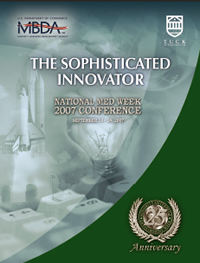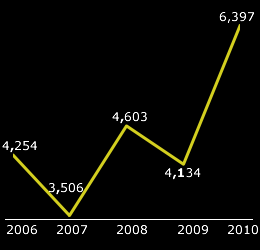Created on September 7, 2012
|
 There are dozens of ways to increase profits. You can cut costs, you can negotiate more aggressively, you can raise price. Perhaps, however, you want profits plus something more profound.
There are dozens of ways to increase profits. You can cut costs, you can negotiate more aggressively, you can raise price. Perhaps, however, you want profits plus something more profound.
Try innovation.
Some companies excel at today’s business. Those companies keep the wheels of the economy turning. Other companies innovate. These are the companies that build a better economy for tomorrow and raise living standards for all.
The largest companies have mammoth resources at their disposal for innovation. And so it is, and so it should be, that the most storied innovators are always the underdogs — those working in the garage.
Your garage may be lonely, but you do not work alone. America stands behind its minority business enterprises and salutes its innovators. In particular, America honors its enterprising leaders of this generation and of generations past for their historic and continuing contribution to the America we take pride in today. To sustain its greatness, America must continue to foster innovation domestically, attract the most talented and energetic business leaders from around the world and put their skills to work in this nation.









 What’s Level 1A? At Level 1, there is a single innovative idea. It improves or expands the existing business and measuring its success is no different from measuring the performance of the existing business. Also, there is no need to hire new kinds of experts or to substantially change job descriptions or core business process. At Level 1A, innovations can be implemented in a short time period — at most, a few months.
What’s Level 1A? At Level 1, there is a single innovative idea. It improves or expands the existing business and measuring its success is no different from measuring the performance of the existing business. Also, there is no need to hire new kinds of experts or to substantially change job descriptions or core business process. At Level 1A, innovations can be implemented in a short time period — at most, a few months. Why Innovate? How?
Why Innovate? How?



